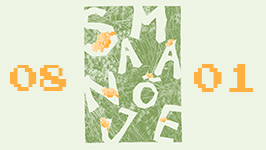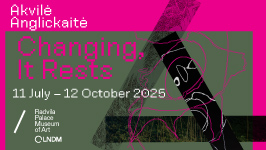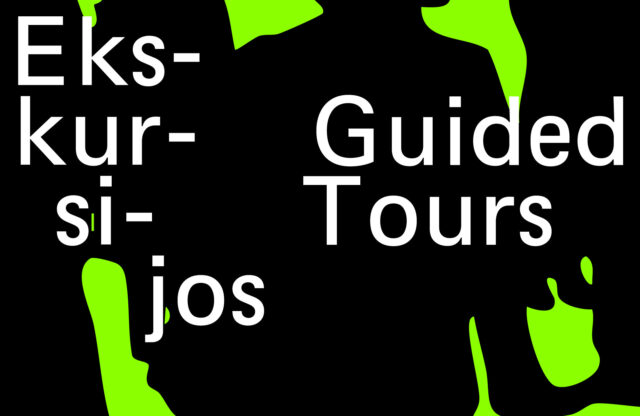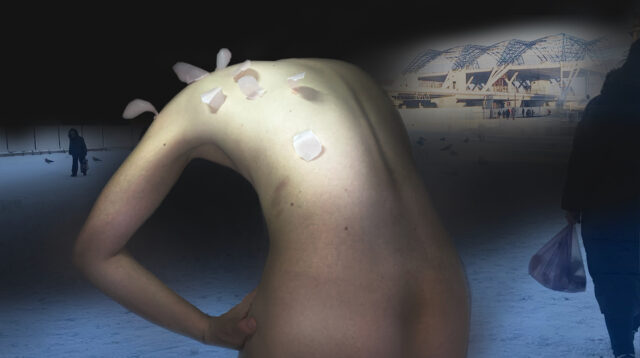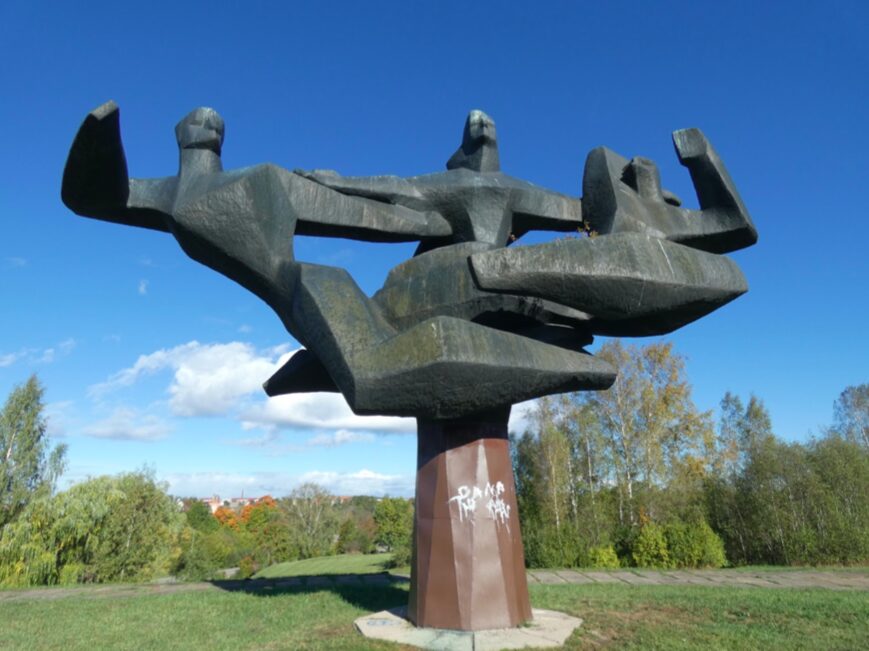 Abstract
Abstract
Extraordinary times require extraordinary figures of speech. Ancient cosmogonic mythologies and their protagonists[1] may help us to understand why today’s positivist myths of egalitarian nationalist societies do not function as we wish.
Looking for a mythical figure that would embody the current global state of the intertwined capitalocene, global warming, sixth great extinction, and “post truth” politics, one may easily stumble upon the chthonic figure of velnias, Lithuanian for ‘devil’. As god is dead, and so is the Goddess, sorry, Marija Gimbutas[2], velnias seems to be alive and kicking. The pre-Christian version of chthonic velnias was a deity: the opposite of the sky gods, someone taking care of the dead and animals at a time when the afterlife was imagined as a meadow and the dead would become animals. Velnias had a connection to lakes, swamps, bogs, wetlands and water in general, farmed earth, forests, forest animals, priests, musicians, all playing an important part in erotic imaginary, etc. One of the richest figures in terms of the variety of its appearances in folklore, velnias also was the wealthiest deity, as velnias knew where the underground wealth was hidden, often corrupting priests and farmers alike.
While presenting a landscape of some mythological thinking, this essay draws a connection between the old mythology of chthonic velnias and the new mythology of post-democratic capitalism with the so-called financial heavens, fossil capitalism, post-fact politics, and concentrates on the chthonic powers of the capital itself.
How it all started
Etiologic – belonging to the studies of causation – myths and legends concentrate on facts, not on a narrative, ethnologists say. In some of them, a god took a devil for an assistant, thus they were almost equal. Or velnias was serving the god, trying to copy the god, albeit unsuccessfully. Together, they were creating the world but the assistant was rather clumsy. For example, the god would throw a piece of clay and would get a beautiful flying and singing bird. The devil would throw a piece of mud and would get a slimy toad. To cut this very long list of stories short, the simplest interpretation of these myths and legends would be to say that the god was not really happy with all the stuff the devil had created – the devil was not into the details at all.
Some context for a landscape
Humans were also rather passive then, but, really, what could they do? The first humans were created from a god’s spit into the sea, coming out as a piece of dribbling foam.
And the land was full with giant giants. For example, a couple of giants used to share cigarettes on mountains of Girgždutė and Medvėgalis. One was sitting on one mountain and the other was sitting on another one. Their wives were cooking and tasting each other’s soup with big spoons. So big were the giants. Some even say that giants jumped on the Moon as they wanted to leave the Earth to humans. Even now you may see a couple of them there. One is standing and another is lying. They look rather small, true, but you know, the Moon is quite far from here. However, before they had breakfast, while building their huts, on the earth, not on the Moon, they would hang their axes on clouds. Generally they would make fun of people. Once upon a time a farmer was working in his field. A giant came, kicked his heel into the ground, made a puddle, pissed into it, and drowned the farmer and his ox there.

The landscape as literary and sculptural environments
Words were alive back then, and more dangerous than just a poem or an animal. There was nothing ‘post-truth’ about them. You could do things with words, almost as it was advertised during the linguistic turn in the last century. Or they could do things with you. Tweeting and posting was not recommended.
For example, lakes really enjoyed travelling back then. They would arrive as incognito clouds and would hang above a herd, town or village making a really loud noise, like some giant bee or jumbo pig. People would evacuate their houses as they were afraid that the cloud lakes would just drown whatever was below. The solution for this problem was to guess the name of the lake, almost like in a quiz. Sometimes the name was pronounced accidentally and could instantly drown herds with their herdswo/man as the lakes would just settle down wherever they were hovering. A herdswo/man would call their animals by name and if, circumstantially, the hovering lake would have the same name as their animal it would fall down, immediately drowning the herdswo/man with all their cattle.
This story also tells a connection between the devil, herd and water, but more about it in the next chapters.
Clouds had ears, but they could be eyes too
The lakes were travelling bodies, but they were also eyes themselves, belonging to someone you better avoid naming. Although not always. One story speaks of a lake called Tyruliai, meaning lucidness, which did not have a name at that time. It was a rather large and long lake. Along the lake came a blind man walking who accidentally guessed the lake’s name. The lake would answer the blind man saying that since now, as this blind man correctly guessed its name, the lake would become blind itself while turning into a swamp, and the blind man would be able to see again.
Once, a sorcerer arrived and asked if people would like to get a lake with all the fishes. Though the villagers refused the sorcerer’s offer, the lake arrived anyway. The lake was so huge that all the villagers were very scared. When the sorcerer arrived, the sorcerer drove a stem into a field since causing the lake to stay where the stem had been stuck.
To make the lake fly away again you only needed to run around it thrice, very fast and in the shortest possible time. Once, Petruškevičius from Žilinai wanted a lake to leave. He ran around the lake three times, and did this on time. The lake moved away. However, what Petruškevičius experienced was so scary, that he died three days later.
And stones are not what they seem either. One girl didn’t want to marry a man. She said she wanted to turn into a stone instead. And so she did as she said. My mother said that even some time ago you could clearly see human features in it.


Many-faced velnias
When you read velnias, which is an equivalent for ‘devil’ in Lithuanian, forget the typical Christian figure of Satan as some supernatural evil, an adversary of God, a tempter of mankind. More than two hundred names and various embodiments as animals, birds, reptiles or people of different ages, genders, and professions hint that velnias is/was the most popular character in Lithuanian folklore, but they also suggest that velnias is/was someone who is/was always adapting, transforming, appearing and disappearing according to changing times. It takes you to the other side of life, to the afterlife, representing the dead: velis, velionis means dead in Lithuanian, vėlės are the souls of the dead, in Latvian vel‘i, velenieši similarly mean the souls of the dead which comes from the indo-European root *ṷel-, which means to die in battle and is connected to Valhalla, the place of dead warriors, its inhabitant Valkyrja, and many other mythic imaginaries of the afterlife in Old Norse tradition. While Velnias may appear hot and raging, sometimes, albeit rarely though, Velnias also helps to resolve social justice, in weird ways; and between many other things, is someone who, at least in the eyes of peasants, knows where all the wealth or chthonic capital is hidden.
Antagonisms: velnias vs the thunder god
When hearing thunder, Lithuanians say that thunder god, Perkūnas, is hunting for velnias, a saying that has survived even after Sputnik was orbiting the earth. Reconstructed from many examples of folklore, velnias is meant to be the opposite of the gods of the sky, the sun, light, the colour white, day, right, straightness. Velnias is connected to the antagonisms on the left: underground – sky, darkness – lightness, black – white, night – day, left – right, crooked – straight, two – one.
In analysing this reoccurring struggling opposition between the god of the sky and the earthly devil in ancient Baltic myths, Russian linguists Vladimir Toporov and Vyacheslav Ivanov reconstructed the structure of this most ancient and important mythological transformation in the Indo-European mythology in the following scheme:
- There is the god of thunder up there in the sky, most often on the mountain, near to the top part of the world tree which has three parts.
- The devil or snake is located nearest to the ground on some black wool, by the roots of the world tree.
- The snake steals cattle or people and hides them in the cave of some big rock. Thunder saves the cattle or people by breaking the rock.
- The snake is hiding from now on. It converts into animals, people, under a tree or stone.
- The god of thunder rides the sky and hunts the snake using lightning bolts – setting fire to tree or breaking rocks open.
- After the god of thunder wins over the snake, water appears or it starts raining. The snake hides in the water under the earth.
But what happens if the so called thunder gods fails and does not come to save the herd or the people or actually hits the wrong tree? The thunder god promises to give the stolen herd, the stolen wealth back to the people, but it never does as the thunder god gets involved in shady chthonic business with the snake—the devil. Does that not mean that the New Year, new era, new cycle of life can’t come? Do the people get stuck in the last year, the last era, in the past then?

Watching TV with my grandma
“Don’t whistle your Rihannas at home”, says my grandma, when I visit her. You will invite velnias, she says. Her hair is almost white now. Her age is between Marija Gimbutas and Jonas Mekas’s. I remember how she would teach me to burn all cut hair and nail clippings at home. Why? Hair may be taken by birds. They will build a nest out of it and give you a headache when they nest their eggs. Nail clippings? Velnias collects them. It’s his money to buy your soul from you. If you accidentally cut your finger, you need to stick a knife into the earth so a wound will heal faster. If your arm doesn’t function, you need to catch a mole and hold it on your hand until it kicks the bucket. If you hear a cuckoo, another devilish bird, singing and you have money on you, it means you will not lack the money all year round.
We switch on the TV and watch it together just like we used to when I was a kid living at hers during summers when we would watch Twin Peaks together. This time we watch the financial news. The headlines are unsettling:
“Giant Leak of Offshore Financial Records Exposes Global Array of Crime and Corruption. Millions of documents show heads of state, criminals and celebrities using secret hideaways in tax havens.”
“Developing countries lose at least US$100 billion per year in corporate tax revenue due to tax dodging by large companies.”
“World leaders who have embraced anti-corruption platforms feature in the leaked documents.”
“The 50 largest U.S. corporations currently stash about $1.4 trillion in offshore tax havens.”
“Between 2008 and 2014, these titans of big business — a group that includes Apple, Coca-Cola and Disney — together received approximately $27 in federal loans or similar aid for every $1 they paid in federal taxes.”
“EU governments block anti-tax dodging measures.”
“Tax havens accuse US of ‘hypocrisy’ over tax avoidance.”
“Financial secrecy — like greenhouse gas emissions — has a costly impact on the entire world, which tax havens choose to ignore.”
How the money produces chthonic worlds
So where is this chthonic herd or all the wealth hidden, and why don’t the world leaders, the contemporary avatars of thunder gods equipped with drones, hunt the snake which has stolen all the wealth? The air is unclear: polluted by those letting out that chthonic carbon dioxide from a fossil fuel, from permafrost, into the atmosphere. The climate is heating up. And the capital has never been as chthonic as ever before. Chthonic here means being ghostly, immaterial, coming from the underground beneath the earth, from fossil energy, from mining, but also being shady, hiding in tax havens, protected by secret financing laws, transferable using multiple foreign law offices and off-shore banks, or at chosen banks near you.
This world needs to be recreated – we need new cosmogonic myths of the new world to share, to believe in. The power of cosmogonic myths is that they draw the picture of the whole universe as opposed to the nationalist or regionalist mythologies of today’s societies. However globalist we see ourselves, elections are still local, slogans are mostly nationalist, global migration is mostly illegal, societies lack equal opportunities and transparency, only the capital is really global, uniting all the ideological regimes at war. Only the rich which include corporations, and the corrupt who don’t pay local taxes and hide their assets in off-shore tax-free paradises instead, are the ones who take advantage of the global economy.
According to economists, the world’s financial liabilities are worth about $7.6 trillion more than the world’s financial assets. “There are only three explanations: aliens have been accumulating trillions of dollars of claims against Earthlings; innocent mistakes by statistical agencies add up to an enormous gap; or, most believably, the world’s ultra-rich have squirreled away trillions of dollars from the authorities to avoid paying tax.”[3]
Shady money coming from fossil capitalism is used as bribes to elect politicians who support global fossil economy, the relieved carbon dioxide adds to the global warming, bleaching coral reefs, enhancing the great sixth extinction. Climate change also affects famine and migration in Africa and Asia, it sends waves of immigrants to the so-called ‘wealthier societies’ that experience inflation, especially of the real-estate market that is being fertilised, again, by shady foreign investments and laundered money[4] coming from Columbian and other drug cartels[5], or the same fossil economies, mostly dictatorships. If those wealth societies react, in return, by voting for the populist rhetoric – which is also supported by shady money coming from interested countries like Putin’s Russia – at the end we will have literary and figuratively heated up a fear-mongered divided world. In this world, in this toxic environment with its increased divisions between nations, classes, mind-sets and expectations, it is much easier for the chthonic capital to circulate.
Thus, on one hand, the shadowy part of the capital connects drug mafias, tyrants, tax-evasive global corporations, household names, your local banks, art collectors, corrupt officials – you name the rest of them – most probably with coming elections, global warming, with the future; on the other hand, if the capital is already the most global attribute, traversing the universe back and forward as we speak, maybe, if rightly named, recreated and used, it may be helpful to produce new truly universal cosmogonies based on fair and transparent redistribution of wealth and equal opportunities, this time globally?
It seems that in a world that has reached the end of history, we, the so called 99 percent, the clicking peasants of the global village, need new classless, truly global cosmogonic myths and their characters to help recharge the world into more peaceful cycles. Although current world leaders do not invoke trust and, we don’t have enough time, what is more important is that the world may still succeed in being recreated, restarted, becoming transparent again, and the only way to do this would be to create new functioning global cosmogonies – only then will the world enter a new era.
Questions and answers (a fairytale logic)
Once upon a time a crane, which, needless to say, belonged to the devil’s sphere too, flew over with a full, boastful throat.
– Crane, crane, what’s in your throat?
– Priest’s money.
– What is the money for? – What is that cutter for?
– To cut some grass.
– What is that grass for?
– To feed cows.
– What are cows for?
– To milk some milk.
– What is that milk for?
– To be drunk by herdswo/men.
– What are herdswo/men for?
– To herd cattle.
– What are cattle for?
– To dig slopes.
– What are slopes for?
– To sow wheat.
– What is that wheat for?
– To bake buns.
– What are buns for?
– To be eaten by old ladies.
– What are old ladies for?
– To grind gunpowder.
– What is gunpowder for?
– To hunt hares.
– What are hares for?
– For the rich to eat.
– What are the rich for?
– To be hanged on a gate.
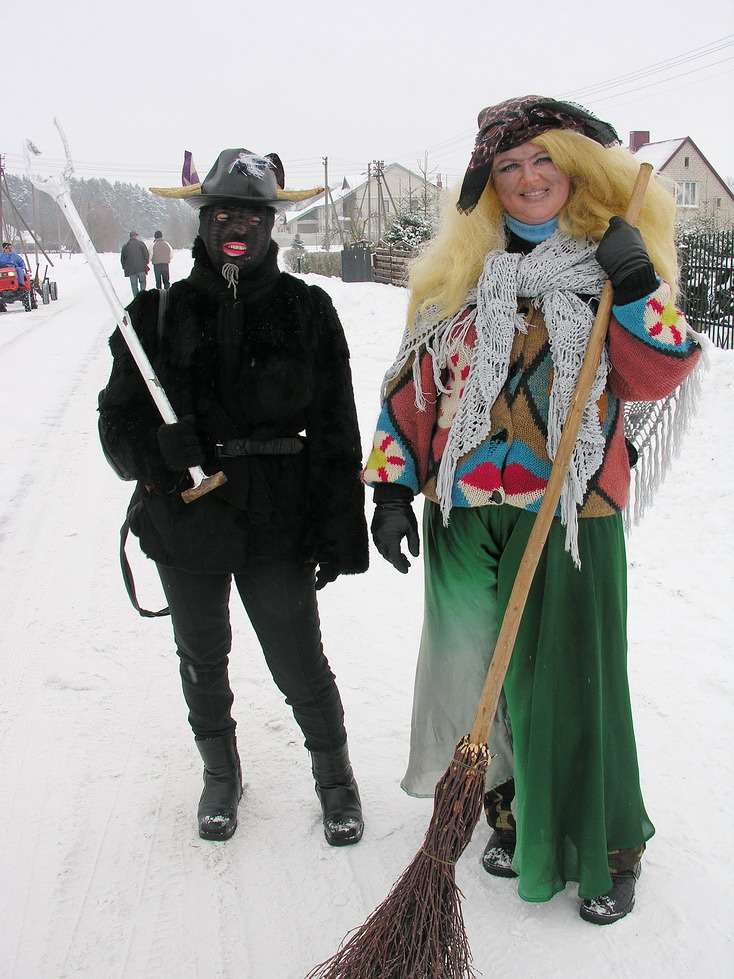
[1] This essay was written by freely interpreting personal memories, books, folklore collections, and scientific papers by my grandmother, Jonas Basanavičius, Lina Būgienė, Algirdas Julius Greimas, Marija Gimbutas, Norbertas Vėlius, Gintaras Beresnevičius, and others. I feel greatly indebted to those extraordinary people.
[2] Marija Gimbutas (1921-1994) was a Lithuanian-American archaeologist, amongst other things also known for her research into the Neolithic and Bronze Age cultures of “Old Europe” and the promotion of the cult of the Goddess.
[3] Matthew C Klein, “The case against Luxembourg”. https://ftalphaville.ft.com/2015/10/21/2142483/the-case-against-luxembourg
[4] “UK ‘ignoring flood of dirty Russian cash’: Millions ‘being laundered through British banks but authorities refuse to investigate’. http://www.dailymail.co.uk/news/article-3572293/UK-ignoring-flood-dirty-Russian-cash-Millions-laundered-British-banks-authorities-refuse-investigate.html#ixzz4aqKJw2zb.
[5] “London is now the global money-laundering centre for the drug trade, says crime expert”, http://www.independent.co.uk/news/uk/crime/london-is-now-the-global-money-laundering-centre-for-the-drug-trade-says-crime-expert-10366262.html
Illustrations: Užgavėnės or Mardi Gras in Samogitia. 2010.
lt.wikipedia.org, GNU Free Documentation License, user: Algirdas

 Abstract
Abstract


